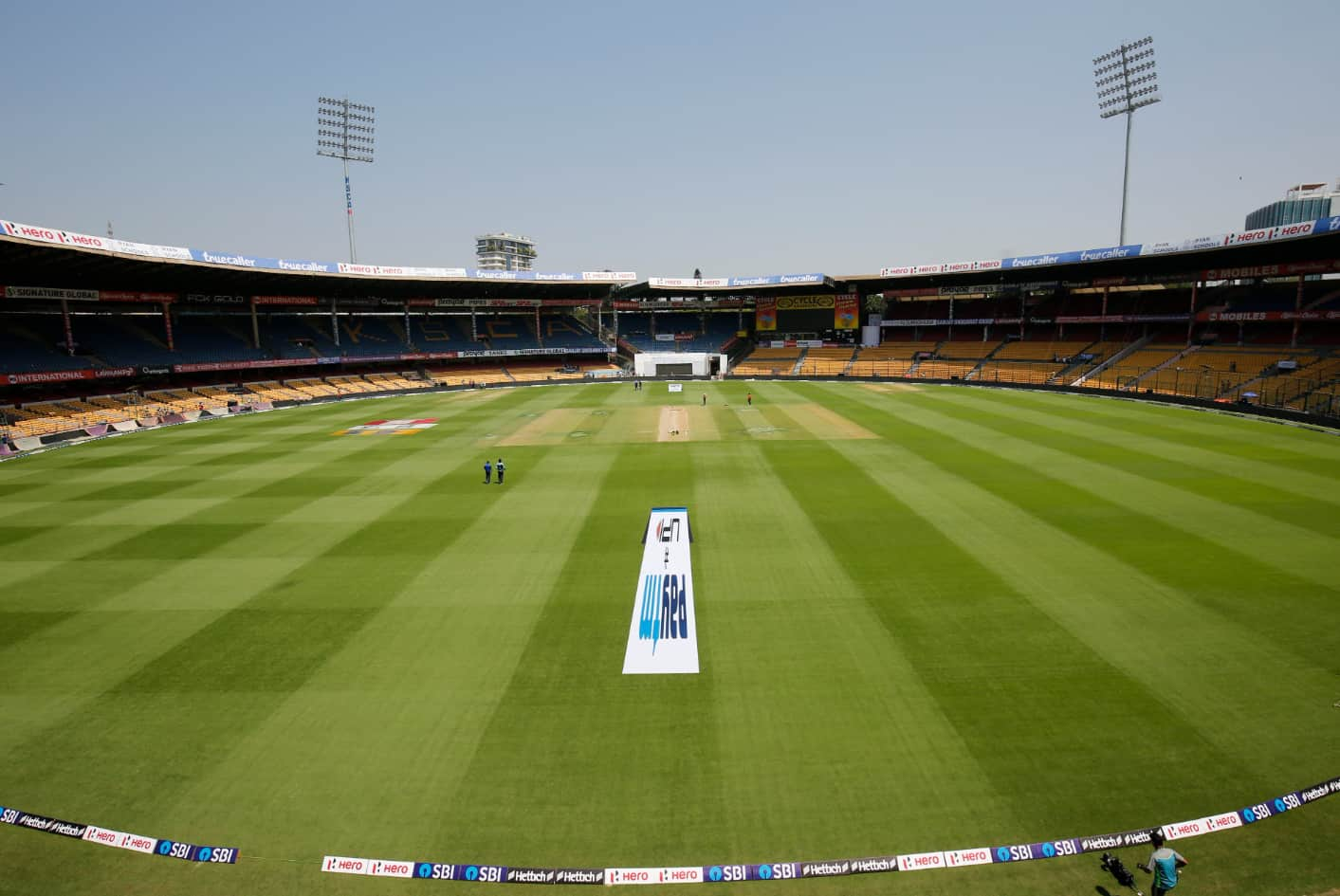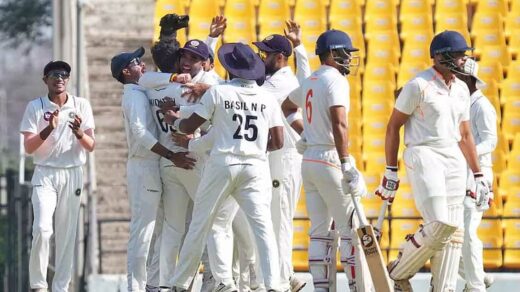Cricket stadiums define nations as much as the players who compete in them.
When you think of Australian cricket, the Melbourne Cricket Ground comes to mind.
English cricket evokes images of Lord’s. Pakistan’s cricket identity is inseparable from Karachi’s National Stadium.
But what happens when an entire country builds cricket infrastructure on a scale unprecedented in the sport’s history?
The question of how many international cricket stadiums are in India reveals something far more profound than a simple numerical answer.
It tells a story about economic transformation, cultural priorities, and administrative ambition that spans seven decades.
From the colonial-era grounds of the 1950s to today’s technologically advanced mega-stadiums, India’s cricket venue network represents the world’s most extensive cricket infrastructure project.
Understanding this network requires looking beyond raw numbers. What qualifies a venue for international status? How are these stadiums distributed across India’s vast geography?
Which states invested most heavily in cricket infrastructure? What drove the construction boom that added dozens of venues in recent decades? How does India’s stadium count compare to other cricket-playing nations?
These questions matter because cricket stadiums aren’t neutral spaces—they’re economic engines generating employment, tourism revenue, and regional pride.
They’re cultural touchstones where generations of fans create shared memories. They’re political assets that state governments use to demonstrate development and attract investment.
This comprehensive analysis explores every dimension of India’s cricket stadium landscape, providing data-driven insights into the infrastructure that supports the world’s most passionate cricket market and shapes how millions experience the sport they love most.
How Many International Cricket Stadiums in India?

India’s Incredible Cricket Stadium Boom: From 10 to 81 in 75 Years
Cricket in India isn’t just a sport—it’s a religion that demands temples. And these temples are the cricket stadiums spread across the nation.
In the 1950s, India had barely 10 international cricket venues. Most matches happened in Kolkata’s Eden Gardens or Chennai’s Chepauk Stadium. Fans from other cities could only dream of watching live international cricket.
Fast forward to 2025, and the landscape has transformed completely.
Today, nearly every major city boasts at least one international-standard cricket stadium. From the Himalayan foothills of Dharamshala to the coastal city of Visakhapatnam, cricket venues dot the entire Indian map.
This wasn’t accidental growth. It resulted from:
- Rising cricket popularity after India’s 1983 World Cup victory
- Economic liberalization in the 1990s bringing investment
- IPL’s launch in 2008 creating demand for modern stadiums
- State governments viewing stadiums as pride symbols
- BCCI’s push for world-class infrastructure
- Growing middle class with disposable income for tickets
The numbers tell an amazing story. India went from hosting a handful of international matches annually in the 1970s to hosting over 40+ international fixtures every year by 2020.
This guide breaks down exactly how many stadiums exist today, where they’re located, which are most important, and what the future holds.
The Big Answer: How Many International Cricket Stadiums in India?
How Many International Cricket Stadiums in India as of 2025?
81 stadiums have hosted at least one official international cricket match (Test, ODI, or T20I) recognized by the International Cricket Council (ICC).
Breaking Down the Numbers:
| Category | Count | Details |
|---|---|---|
| Total International Stadiums | 81 | Have hosted at least 1 international match |
| Regularly Active Venues | 30 | Host major bilateral series and tournaments |
| Occasional Use Venues | 35 | Used for smaller series or backup |
| Rarely Used/Historical | 16 | Hosted matches in past, now inactive |
| Under Construction (2025) | 2 | Varanasi & Surya City Bengaluru |
| Projected Total by End of 2025 | 83 | After new completions |
What Counts as “International”?
A stadium qualifies as international if it has hosted:
- Test matches (5-day format)
- One Day Internationals (ODIs)
- Twenty20 Internationals (T20Is)
- Official ICC-recognized senior men’s matches
Women’s internationals and youth matches don’t count toward this 81-stadium figure, though many venues host those, too.
Timeline: How India Built Its Cricket Stadium Empire?
1950s – Early Days:
- Only 5-6 venues regularly hosted international cricket
- Eden Gardens (Kolkata) and Chepauk (Chennai) dominated
- Limited infrastructure, basic facilities
- Matches drew massive crowds despite minimal seating
1960s – Slow Expansion:
- Feroz Shah Kotla (Delhi) gained prominence
- Brabourne Stadium (Mumbai) hosted key matches
- Total international venues reached approximately 8-10
- Focus remained on major metropolitan cities
1970s – Regional Spread Begins:
- Bangalore and Hyderabad got international venues
- Capacity improvements at existing stadiums
- Introduction of better drainage systems
- International venues count reached 12-15
1980s – Post-1983 World Cup Boom:
- India’s 1983 victory sparked nationwide cricket mania
- Smaller cities demanded their own venues
- Investment in floodlights for day-night matches
- The count rose to approximately 20 venues
1990s – Liberalization Era:
- Economic reforms brought private investment
- Modern stadiums built in Mohali, Cuttack, and Guwahati
- Improved spectator amenities became a priority
- Total venues crossed the 30 mark
2000s – New Millennium Growth:
- BCCI’s financial strength grew exponentially
- Purpose-built stadiums in Ranchi, Dharamshala, Raipur
- Technology integration started (replay screens, LED lights)
- Venue count reached 50+
2010s – IPL Impact:
- IPL’s success demanded more quality venues
- State governments competed to build world-class stadiums
- Lucknow, Indore, and Rajkot got major upgrades
- Count jumped to 70+ venues
2020s – Modern Era:
- Narendra Modi Stadium (Ahmedabad) became the world’s largest cricket stadium
- Focus shifted to sustainability and technology
- COVID-19 caused a temporary pause, then resumed
- Current count: 81 stadiums
Also Check: Narendra Modi Stadium Seating Arrangement
Complete Stadium Count by Category
Understanding India’s cricket infrastructure requires categorizing stadiums by usage and importance.
| Category | Number of Stadiums | Notes |
|---|---|---|
| Premier Venues (Major Tests/ODIs) | 15 | Host most important matches |
| Regular IPL Venues | 12 | Used annually for IPL |
| Secondary International Venues | 18 | Host bilateral series occasionally |
| Historical Venues (Now Inactive) | 16 | Hosted matches but now retired |
| Emerging Venues (Recently Added) | 12 | Built in last 5 years |
| Under Construction | 2 | Opening in 2025 |
| Women’s Cricket Primary Venues | 8 | Overlaps with men’s venues |
| Total International Standard | 81 | Official ICC-recognized |
How Many International Cricket Stadium in India and Their Location: Complete List
Major International Cricket Stadiums Across India:
| Stadium Name | City | State | Capacity | Year Opened | Famous For |
|---|---|---|---|---|---|
| Narendra Modi Stadium | Ahmedabad | Gujarat | 132,000 | 2020 | World’s largest cricket stadium |
| Eden Gardens | Kolkata | West Bengal | 68,000 | 1864 | Oldest and most iconic venue |
| M. A. Chidambaram Stadium | Chennai | Tamil Nadu | 38,000 | 1916 | Historic Test venue |
| Wankhede Stadium | Mumbai | Maharashtra | 33,000 | 1974 | 2011 World Cup Final |
| M. Chinnaswamy Stadium | Bengaluru | Karnataka | 40,000 | 1969 | Solar-powered stadium |
| Rajiv Gandhi Stadium | Hyderabad | Telangana | 55,000 | 2004 | Modern infrastructure |
| Arun Jaitley Stadium | Delhi | Delhi | 41,000 | 1883 | Historic Feroz Shah Kotla |
| HPCA Stadium | Dharamshala | Himachal Pradesh | 23,000 | 2003 | Himalayan backdrop |
| Ekana Stadium | Lucknow | Uttar Pradesh | 50,000 | 2018 | Newest world-class venue |
| JSCA Stadium | Ranchi | Jharkhand | 40,000 | 2010 | MS Dhoni’s home ground |
| Punjab Cricket Association Stadium | Mohali | Punjab | 26,000 | 1993 | Consistent Test venue |
| Sawai Mansingh Stadium | Jaipur | Rajasthan | 30,000 | 1969 | Rajasthan Royals home |
| Maharashtra Cricket Association Stadium | Pune | Maharashtra | 37,000 | 2012 | Modern amenities |
| Saurashtra Cricket Association Stadium | Rajkot | Gujarat | 28,000 | 2013 | Fastest pitch in India |
| Barabati Stadium | Cuttack | Odisha | 45,000 | 1958 | Historic eastern venue |
| Vidarbha Cricket Association Stadium | Nagpur | Maharashtra | 45,000 | 2008 | Central India hub |
| Himachal Pradesh Cricket Association Stadium | Dharamshala | Himachal Pradesh | 23,000 | 2003 | Scenic mountain venue |
| Shaheed Veer Narayan Singh Stadium | Raipur | Chhattisgarh | 65,000 | 2008 | Large capacity modern stadium |
| Indira Gandhi Stadium | Vijaywada | Andhra Pradesh | 25,000 | 1981 | Coastal venue |
| Dr. Y.S. Rajasekhara Reddy Stadium | Visakhapatnam | Andhra Pradesh | 27,000 | 2003 | Port city venue |
This table represents just 20 of the 81 total venues. The List of International Cricket stadiums in India includes many smaller venues that have hosted occasional international matches.
Also Check: Pallekele International Cricket Stadium
Top 10 Cricket Stadium in India: The Best of the Best
When discussing the Top 10 Cricket Stadium in India, we consider capacity, history, facilities, and importance.
| Rank | Stadium Name | Location | Capacity | Why It’s Top 10 |
|---|---|---|---|---|
| 1 | Narendra Modi Stadium | Ahmedabad | 132,000 | World’s largest, ultra-modern facilities |
| 2 | Eden Gardens | Kolkata | 68,000 | Historic significance, “Mecca of Indian Cricket” |
| 3 | Wankhede Stadium | Mumbai | 33,000 | 2011 World Cup Final venue, Mumbai cricket culture |
| 4 | M. Chinnaswamy Stadium | Bengaluru | 40,000 | Solar-powered, excellent pitch quality |
| 5 | Rajiv Gandhi Stadium | Hyderabad | 55,000 | Modern design, growing cricket hub |
| 6 | Ekana Stadium | Lucknow | 50,000 | Newest world-class facility, state-of-art |
| 7 | M. A. Chidambaram Stadium | Chennai | 38,000 | Historic Test venue, spinning pitches |
| 8 | JSCA Stadium | Ranchi | 40,000 | MS Dhoni’s home, passionate crowds |
| 9 | HPCA Stadium | Dharamshala | 23,000 | Most scenic venue, mountain backdrop |
| 10 | Arun Jaitley Stadium | Delhi | 41,000 | Capital’s premier venue, rich history |
What Makes These Top 10?
- Narendra Modi Stadium stands alone as the world’s largest cricket venue. Built on the site of the old Sardar Patel Stadium, it represents India’s ambition and capability to set global standards.
- Eden Gardens remains emotionally the most important. Opened in 1864, it has witnessed 150+ years of cricket history, including India’s 1987 World Cup semi-final victory over England.
- Wankhede Stadium holds special significance for hosting the 2011 World Cup Final where India beat Sri Lanka. That night made Wankhede immortal in cricket folklore.
- M. Chinnaswamy Stadium pioneered sustainability by becoming cricket’s first solar-powered venue. It generates its own electricity through rooftop solar panels.
Also Check: Providence Stadium
Regional Distribution: Cricket Stadiums Across India
India’s cricket infrastructure spreads remarkably evenly across geographic regions.
Stadium Count by Region:
| Region | States Included | International Stadiums | Key Cities |
|---|---|---|---|
| North India | Punjab, Haryana, Delhi, Himachal Pradesh, Jammu & Kashmir, Uttarakhand | 14 | Delhi, Mohali, Dharamshala, Lucknow |
| South India | Karnataka, Tamil Nadu, Andhra Pradesh, Telangana, Kerala | 18 | Bengaluru, Chennai, Hyderabad, Kochi |
| West India | Maharashtra, Gujarat, Rajasthan, Goa | 22 | Mumbai, Ahmedabad, Pune, Jaipur |
| East India | West Bengal, Odisha, Jharkhand, Bihar | 15 | Kolkata, Ranchi, Cuttack, Patna |
| Central India | Madhya Pradesh, Chhattisgarh | 7 | Indore, Raipur, Bhopal |
| Northeast India | Assam, Tripura, Meghalaya | 5 | Guwahati, Agartala, Shillong |
| Total | All Regions | 81 | 30+ Major Cities |
Why This Distribution Matters:
Cricket isn’t concentrated in just a few cities anymore. A fan in Guwahati has as much chance to watch live international cricket as someone in Mumbai. This democratization of cricket access has:
- Increased grassroots participation
- Developed local talent pipelines
- Boosted regional economies through tourism
- Created emotional connections with the national team
- Made cricket truly India’s game, not just big cities’ game
State-Wise Breakdown: Specific State Analysis
How Many International Cricket Stadium in UP:
Uttar Pradesh, India’s most populous state, has 3 major international cricket stadiums:
- Ekana Cricket Stadium (Lucknow) – 50,000 capacity, opened 2018
- Green Park Stadium (Kanpur) – 32,000 capacity, historic venue since 1945
- Shaheed Veer Narayan Singh Stadium (Greater Noida) – 20,000 capacity, occasionally hosts internationals
Additional UP Venues:
- Agra, Meerut, and Varanasi (upcoming) have smaller venues that occasionally host domestic matches
How Many International Cricket Stadium in Bihar:
Bihar currently has 1 official international cricket stadium:
- Moin-ul-Haq Stadium (Patna) – 25,000 capacity, hosts occasional ODIs and T20Is
Bihar’s cricket infrastructure is developing, with plans for upgraded facilities in Gaya and Muzaffarpur in the coming years.
India All Stadium Name List (Major States):
- Maharashtra: 6 stadiums (Mumbai, Pune, Nagpur, Kolhapur, Nashik, Aurangabad)
- Gujarat: 4 stadiums (Ahmedabad, Rajkot, Vadodara, Surat)
- Tamil Nadu: 3 stadiums (Chennai, Salem, Dindigul)
- Karnataka: 3 stadiums (Bengaluru, Mysore, Hubli)
- West Bengal: 2 stadiums (Kolkata, Siliguri)
- Telangana: 2 stadiums (Hyderabad, Warangal)
This list helps answer those searching for the International Cricket Stadium in India List pdf type information, though complete PDFs with all 81 venues are available through the BCCI official documentation.
Upcoming Cricket Stadiums Opening in 2025
India’s stadium expansion continues with two major projects to be completed in 2025.
1. Varanasi International Cricket Stadium (Uttar Pradesh)
- Expected Completion: December 2025
- Capacity: 40,000 spectators
- Location: Near Varanasi Airport
- Special Features:
- Architecturally inspired by Varanasi’s spiritual heritage
- Modern drainage system for monsoon games
- State-of-the-art player facilities
- LED floodlights for day-night matches
- Significance: Will become UP’s premier venue after Lucknow
2. Surya City International Cricket Stadium (Bengaluru, Karnataka)
- Expected Completion: Late 2025
- Capacity: 80,000 spectators
- Location: Surya City Township, outskirts of Bengaluru
- Special Features:
- Second-largest stadium in South India
- Fully solar-powered like Chinnaswamy
- Retractable roof sections for weather protection
- Underground parking for 5,000+ vehicles
- Significance: Will host major IPL matches and international series
Once operational, these stadiums will increase the answer to How Many International Cricket Stadiums in India to 83 venues.
Infrastructure Advances: What Makes Modern Indian Stadiums World-Class
India’s newest cricket stadiums aren’t just bigger—they’re smarter and more sustainable.
Key Technological Features:
- Retractable Roofs – Allow play during rain without interruptions
- LED Floodlights – Use 60% less energy than traditional lights
- Hybrid Pitches – Combine natural grass with synthetic fibers for consistency
- Smart Seating Systems – Digital ticketing with assigned seats tracked by apps
- Ultra HD Screens – 4K replay screens visible from every angle
- Advanced Drainage – Games resume within 30 minutes after rain
- Solar Power Generation – Stadiums produce their own electricity
- Rainwater Harvesting – Sustainable water management systems
- Wi-Fi Connectivity – Stadium-wide high-speed internet for fans
- Climate Control – Air-conditioned corporate boxes and player facilities
Sustainability Initiatives:
Modern Indian stadiums lead globally in environmental consciousness:
- M. Chinnaswamy Stadium (Bengaluru): First solar-powered stadium, generates 400 KW daily
- Narendra Modi Stadium (Ahmedabad): Rainwater harvesting capacity of 1 million liters
- Ekana Stadium (Lucknow): LED lighting reduces carbon footprint by 40%
These advances ensure India’s cricket infrastructure remains globally competitive for decades.
Cultural and Economic Impact of Cricket Stadiums
Cricket stadiums aren’t just sports venues—they’re economic engines and cultural landmarks.
Economic Benefits:
- Major matches generate ₹50-100 crore in local economic activity
- Hotels, restaurants, and transport services boom during the series
- Stadium construction creates thousands of construction jobs
- Maintenance provides permanent employment for hundreds
- Tourism increases significantly in stadium cities
Cultural Significance:
- Stadiums become gathering places for communities
- Multi-generational families share cricket memories there
- National pride swells during important victories
- Regional identity gets expressed through home stadiums
- Cricket academies attached to stadiums develop future players
Also Check: Smallest Cricket Stadiums in India
Conclusion: India’s Cricket Stadium Future
So, to definitively answer: How Many International Cricket Stadiums exist in India in 2025?
81 stadiums currently, with 83 projected by year-end after Varanasi and Surya City Bengaluru open.
This remarkable number—the highest of any cricket-playing nation—reflects India’s unique position in world cricket.
No other country hosts as many international matches annually or maintains such extensive infrastructure.
The journey from 10 stadiums in 1950 to 81 in 2025 tells a story of:
- Economic growth enabling sports investment
- Cricket’s cultural dominance in Indian society
- State governments’ pride in hosting international matches
- BCCI’s financial strength and vision
- Growing middle-class demand for live cricket
The future promises even more growth. Smaller cities like Jammu, Dharwad, and Gwalior are planning international-standard venues.
By 2030, India could have 90-100 stadiums capable of hosting international cricket.
This infrastructure ensures that wherever you are in India, world-class cricket is never far away. For cricket fans, that’s paradise.



